Ready to Yuk it Up at INTX
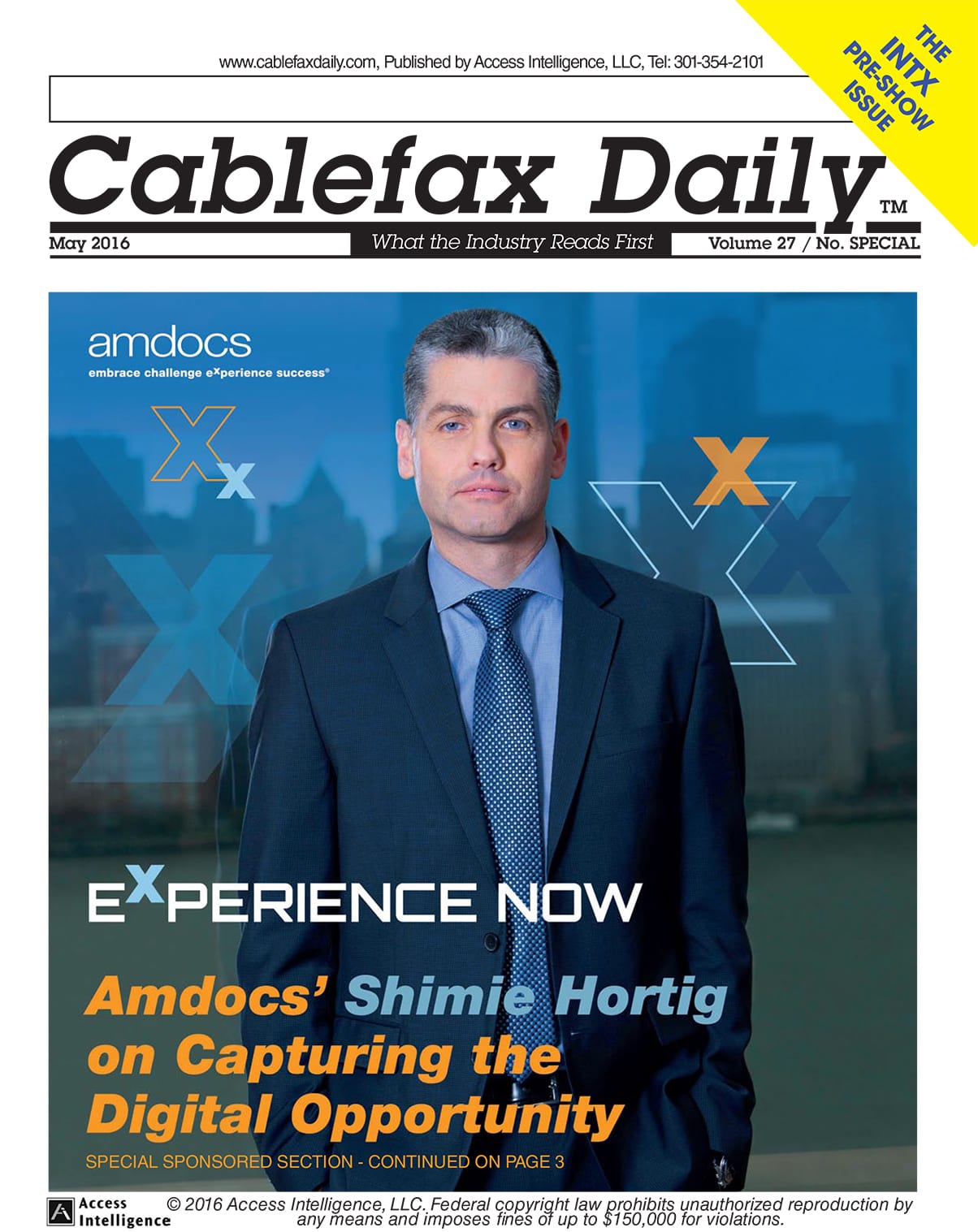
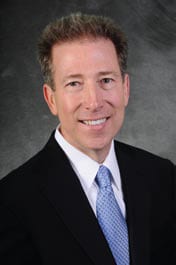
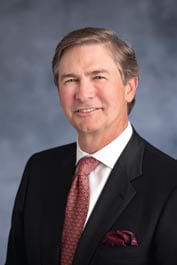 This year’s convention marks the second under NCTA’s INTX: the Internet and Television Expo rebrand, and while the four letters still may not be an easy glide off the tongue, the industry seems a bit more adjusted to the change. Ahead of INTX in Boston May 16-18, we touched base with the event’s co-chairs to discuss what’s in store for this year’s show. Cox pres Pat Esser and Scripps Networks Interactive pres/CEO Ken Lowe provided not only inside details, but more than a few laughs. Like when Esser mentioned that the previous two times he’s co-chaired the show it was with Abbe Raven and George Bodenheimer. “Clearly there’s a trend here. Usually someone does it with me and then they retire,” he quipped. After laughter (which there was much of between the two), Lowe assured us he has no plans to leave for a while. More from our amusing interview with the show’s co-chairs below…
This year’s convention marks the second under NCTA’s INTX: the Internet and Television Expo rebrand, and while the four letters still may not be an easy glide off the tongue, the industry seems a bit more adjusted to the change. Ahead of INTX in Boston May 16-18, we touched base with the event’s co-chairs to discuss what’s in store for this year’s show. Cox pres Pat Esser and Scripps Networks Interactive pres/CEO Ken Lowe provided not only inside details, but more than a few laughs. Like when Esser mentioned that the previous two times he’s co-chaired the show it was with Abbe Raven and George Bodenheimer. “Clearly there’s a trend here. Usually someone does it with me and then they retire,” he quipped. After laughter (which there was much of between the two), Lowe assured us he has no plans to leave for a while. More from our amusing interview with the show’s co-chairs below…
How do you think the INTX brand is catching on?
Esser: I think you’re going to see this year that we’re starting to get our sea legs. Ken and I spent a lot of time talking about this with the committee. This world we live in, there’s so much disruption going on. We want to welcome more outside voices so we can better understand how they see our industry fitting.
Lowe: It takes a while to get used to a new name, no matter what the brand is, no matter what the product is, especially when you’ve been around as long as our show has. It’s very much a modern, forward-looking brand image that I think goes a long way in saying that our industry is actually embracing change and realizing that we have to change with the times.
Does it create a weird dynamic that there may be competitors at a show that has historically had that clubby, cable feel?
Esser: I think it’s healthy. It’s how our customers see the world, so we’re just representing the world the way our customers see it. While there could be moments of tension, I don’t think it’s going to be that awkward. I really don’t.
Lowe: Nor do I. I have to give Pat credit in this area. He has been one of the more vocal leaders in our industry to suggest that we need to see more varied attendees at the event. I think NCTA has done a really good job of providing a program that’s attractive not just to the TV business, but the companies across the content spectrum. We recognize there’s still a lot of work to be done, but I think we’re off to a great start. The fact that our industry is embracing change shows we’re certainly aware everything’s moving at a very fast pace. But it also underscores that everything old is new again. The content businesses that we’re talking about today are actually thriving in an ecosystem that’s been built on the backbone of cable MSOs.
What do you think will be some of the big headlines?
Lowe: Other than the statue we’re secretly erecting for Pat Esser? (Laughter) Sorry, that was supposed to be a secret. Seriously, we are planning a series of Ted Talks. That’s a first for us. I think you’ll hear a lot of chatter about how this is a little more open in terms of not only inviting other content sources and other companies into the tent, but literally the building. The way we’ve laid this out is much more open and conducive to similar conferences around the country. The stage is no longer down this big hallway with the meeting rooms on the other side of the convention center.
Esser: I think you’re going to be able to sit and get into the minds of people who create incredible content. How they think about their audiences—whether that be on multiscreens or multiplatforms. I think that’s going to be exciting. I think you’re going to see us start to talk about virtual reality—introduce it as part of core discussions… I still enjoy walking the floor. There is still an opportunity to learn something on the floor every day. NCTA is going to host an event for local entrepreneurs and startups where they come in and compete to sell their ideas to a panel of experts. And they call it the Lobstah Tank. We’ve been doing a similar concept with Cox Business Services in 20 markets, and it is a homerun, over-the-top event.
I’m not even going to try to attempt that Boston accent for lobster. That’s too tough to follow.
Esser: That’s an Iowa accent.
Lowe: That’s an Iowan Boston accent being spoken from Atlanta, Georgia!
INTX is possibly coming around the close of the Charter-Time Warner Cable merger. Do you think it will have an impact on the tone of the show?
Lowe: Consolidation, acquisitions and roll-ups have been going on for a while in our industry. It just happens to be that some of these recently are on a much larger scale. It has not tended to dominate the conversation as much as it’s the new reality. … Even with all this consolidation, the business continues to move at light speed. That’s what we’re trying to celebrate. This is a business that’s not only reinvented itself, but it’s reinvigorated itself to the point where we want this to be a celebration—very much from the consumer standpoint.
Tom Wheeler is set to speak, and the FCC has made some unpopular decisions recently. What are you expecting there?
Esser: First off, I think the market is working… It’s hard for me to understand what the problem is that regulators are trying to solve. As Ken said earlier, we’re a very open conference so please come share. I believe the chairman is working on showing up and sharing with us what he’s thinking.
Lowe: I think it’s what we’ve been talking about—diverse opinions, coming together with ideas. We may certainly not agree on everything—and I definitely agree with Pat on trying to overregulate sometimes. Chairman Wheeler will show up, and there will be people who agree with some of the things he has to say and others that don’t, but the fact that he can come to a conference like this, say what’s on his mind and have great dialogue, I think that’s something we always want to be noted for. Pat and I remember when Michael Powell was chairman, and I don’t think we agreed with everything Michael said in those days. But Michael would tell you we did!
Esser: Didn’t he do a somersault or something as chairman [at the show]?
Lowe: Do you think chairman Wheeler will do a backflip?
Esser: Not for us. I don’t think so.
We talked about the Lobstah Tank. Are there other ways we’ll feel the Boston influence?
Lowe: Boston is a technology hub—M.I.T., Harvard. The mindset there, the creative thinking that goes on, and the entrepreneurial element that we’re hoping to capture a little bit with Lobstah Tank—but we’re hoping we get a lot of rub off from that area. I know [NCTA is] working very hard at drawing in some people from the academic community.
Esser: I have a question for Ken. [You were talking earlier about other shows]. Comic-Con is known for its characters like Batman and Superman. Will you be coming dressed as Handyman?
Lowe: You knew at some point, this would start deteriorating. Tell you what, Pat. I’ll come in a superhero outfit if you will.
Esser: We’ll think about that.
Are there perks to being co-chair?
Esser: If there is, Ken’s been holding out on me! On a serious note, I love working with Ken. Ken’s a well-respected leader. I’ve had an opportunity to spend a lot of time with Ken over the years. I’ve learned a lot from him. It’s great to have a partner like him involved in something as important as this.
Lowe: Gosh, we must be up for renewal. Seriously, Pat’s exactly right. We have a lot of fun and a lot of laughs. Our business is like any other business. You have to make tough decisions, tough negotiations. But at the end of the day, we like to laugh a little bit and have some fun. I think that’s the one thing Pat and I said—‘if you’ll co-chair, I’ll co-chair, but let’s make sure we have a little fun this year.’ The perk is we’re in a fantastic industry. Let’s enjoy it a little bit.
Amdocs Executive Spotlight | Shimie Hortig
Capturing the Digital Opportunity
Changing customer expectations, disruptive technology and increased industry consolidation are market trends that Amdocs has anticipated for some time, according to Shimie Hortig, president of the cable division at Amdocs, the market leader in customer experience software solutions and services for the world’s largest cable and telecom operators. “It took longer than we expected, but it’s happening big time now!” he stressed. Responsible for Amdocs’ sales, delivery and support efforts at leading cable companies, Mr. Hortig gave us his overview of where the industry stands today.
How has the changing TV ecosystem impacted customer experience?
The digital evolution has totally shifted the balance of power from the operator to the customer. Today’s customer wants to be in full control of their experience, on any device, at any time. As a result, operators need to manage the customer journey by knowing the customer and their preferences across devices, locations and services to ensure every digital experience is truly personalized. And operators know this. A recent Ovum report highlighted that more than 80 percent of service provider executives identified digital transformation as an immediate and critical objective.
How should Pay TV operators respond to the changing competitive landscape?
Cable operators need to leverage all the customer, service and network data they hold to really differentiate themselves. At Amdocs, we have done extensive work in mapping the digital customer experience, and through leveraging our big data analytics capabilities, we can provide operators with a better understanding of their customers’ behaviors along each stage of the journey. And of course, big data analytics can also be used to empower business decisions and improve operational efficiencies.
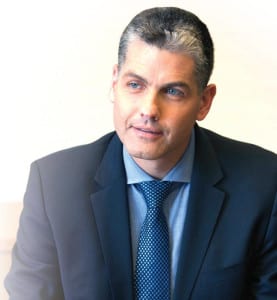 What are some of the biggest growth opportunities for cable operators?
What are some of the biggest growth opportunities for cable operators?
The good news is that there are a number of new revenue streams for cable operators to pursue, such as the enterprise segment, mobile services, non-subscription based services and the Internet of Things (IOT). In terms of enterprise, technological enablers such as virtualization and software defined networking are key, but there are challenges to overcome—for example, the ability to provide national coverage, advanced network services, stringent SLAs, reporting, and security requirements. We’re also seeing cable operators moving to quad-play, adding mobile services, rolling out carrier-grade Wi-Fi, Wi-Fi first models, and virtual network partnerships, and we can help here with our more than 30 years’ experience in the telecommunications industry.
How can cable operators become more agile to adapt to their changing environment?
Without a doubt, technology advancements such as network functions virtualization (NFV) and catalog-driven architectures are enabling operators to become much more agile. In fact, by 2020, it’s predicted that more than 50 percent of networks will be virtualized. This is crucial, because in order to level the playing field with OTTs, operators need to speed innovation, while improving operational efficiency, time to market, time to revenue and customer satisfaction. We are proud to partner with many of the leading cable operators as they embrace the opportunities of our industry’s changing landscape.
Cable Center Hall of Fame 2016 Inductees
Since 1998, the Cable Center’s Cable Hall of Fame has recognized 121 ground-breaking leaders who have left their marks on the industry. This year’s class includes a co-founder of C-SPAN, a revolutionary in digital video recorders, the retired CEO of the venerable Landmark Communications, a president of a top five US cable operator, the CEO of tech heavyweight ARRIS and the co-hosts of MSNBC’s “Morning Joe.” Join us in honoring them at the Cable Hall of Fame Celebration May 16 at the Westin Boston Waterfront. Here we interview this year’s executive honorees.
 Pat Esser | President, Cox Communications, Inc.
Pat Esser | President, Cox Communications, Inc.
You’ve literally risen through the ranks, starting your career climbing telephone poles and selling cable door-to-door. That doesn’t seem to be the traditional career path these days for senior executives. How do you instill a culture of understanding and appreciation of what it’s like in the field?
Never forget the business we are in: we connect people to the things they care most about. And regular field visits serve as great reminders.
What is cable’s biggest opportunity today?
Next generation video, DOCSIS 3.1, business services, home automation all represent tremendous opportunities and offer additional ways for us to provide consumers and businesses with a more connected life.
Diversity has been a personal crusade for you. What advice do you have on making it a priority?
Personal involvement of senior executives makes it a personal priority, and including in leadership goals enforces its importance.
How does the Cox Family legacy impact Cox culture?
It’s the fabric that ties our company together. The family and company priorities are aligned and have remained consistent through the years: treat our customers right, take care of our employees and be good stewards of the communities we serve.
What have you learned as a new grandfather?
I’m reminded of the power of the little things in life, and I marvel that new parents do so much on so little sleep.
What does being named to the Cable Hall of Fame mean to you?
I’m honored to be recognized by both my peers and those who have built this incredible industry.
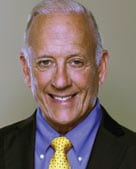 John D. Evans | Chairman and CEO, Evans Telecommunications Co.
John D. Evans | Chairman and CEO, Evans Telecommunications Co.
What did being a U.S. Navy Lieutenant teach you about leadership?
My naval career both at sea and on the staff of the Chief of Naval Operations taught me leadership, project management, delegation, discipline, listening and how to align teams and create process to achieve goals. These are all skills I would use in building/rebuilding cable systems.
You are a passionate advocate of social justice. What world issue do you believe deserves the most attention right now?
The two that I am spending my time on are criminal justice reform and LGBT equality. Currently the US has incarcerated 2.2 million at a cost of $80 billion/year, of which 50% are non-violent drug offenders. My foundation is assisting the White House to reform our justice system to save lives and taxpayer money. Several states are trying to roll back LGBT equality by passing discriminatory legislation, which our industry is opposed to.
The coverage of national politics has evolved since the days you co-founded C-SPAN. And yet the channel remains as relevant as ever. What’s the secret?
The early board of directors was committed to C-SPAN as a noncommercial public service focused on bringing the Congress and public policy events directly to the people with minimal filtering. This was also the premise of our political coverage beginning as far back as the 1984 party conventions. Over the years, even as the breadth of C-SPAN programming increased, management and our board have stayed true to this “minimal filtering” mission. The result is that C-SPAN continues to be a unique resource that stands apart from other coverage.
You built the first cable television system in the Washington, D.C., area in 1978. Today, the cable industry is quite different. How has the decreased barrier for entry into the business changed things?
I’m not sure that anyone would want to re-live the franchise battles that we fought in the 1970s and 80s. But today’s challenges—to identify distribution systems, procure content at a reasonable price, market and promote product, and do a great job serving customers—is just as daunting. Additionally, technology has driven dynamic change in content distribution. Today, if you choose to distribute content, working with a traditional multichannel video provider is just one option. Other options like online or digital distribution, apps and platforms, direct-to-home satellite, or telco video are all competitive to cable. These additional platforms have been a huge boon for consumers and viewers, providing content of every kind, anytime, anywhere, and on any device. Accordingly, customer care, customer service, consumer friendliness, ease of navigation, quality of the product, and the value of the service, all have become more important than ever.
What does being inducted mean to you?
I’m humbled because I stand on the shoulders of those being and previously inducted, and I share this honor with all those who have mentored, coached, taught, and collaborated with me throughout my career.
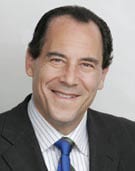 Tom Rogers | Chairman, TiVo Inc.
Tom Rogers | Chairman, TiVo Inc.
What was TiVo like when you arrived?
TiVo was allergic to anyone from NY who wore a tie! That got taken off after the first day… It was also a company highly skeptical of the cable industry because the founders were not real fans
of cable.
What do you think of Rovi’s acquisition of TiVo?
It creates a $3 billion entertainment technology powerhouse, that will define the future of TV viewing for operators and consumers, while providing the best audience data analytics for advertisers and marketers to use to navigate the world of advanced television.
How has TiVo’s relationship with cable MSOs evolved in the past few years?
We’ve gone from having been the guys the cable industry did not want to use when it came to the DVR (in favor of generic DVRs) to now the most widely embraced provider of advanced TV to the industry serving more than 20 of the country’s 25 operators in North America and internationally. TiVo delivers branded next-generation TV experiences in total to about 75 operators in over 30 countries, So, we’ve come a long way baby!
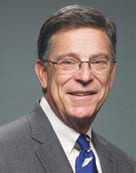 Bob Stanzione | Chairman and CEO, ARRIS
Bob Stanzione | Chairman and CEO, ARRIS
ARRIS just completed a major acquisition with Pace. What does this transaction mean to you?
I’ve been with ARRIS for 21 years now. In that time, we’ve grown from a small, niche player providing Touchstone voice products in the telecommunications field into a global leader in entertainment and communications technology that’s helping transform the way millions of people around the world connect to the Internet and watch TV. I couldn’t be prouder to have been part of that journey. It’s incredibly rewarding to see our bets and our strategy pay off as a company, but what makes it even more special is to see the transformation in our people. Time and time again, they’ve risen to the occasion, and I’ve been there to witness every step of it. I credit our progress to my executive leadership team and the strides they’ve made to cultivate the right talent, innovation and opportunities.
Cable has seen a slew of consolidation on the MSO side in the past few years. Some of those companies are top ARRIS customers. What’s the key to operating in an increasingly consolidated environment?
We see consolidation as both a sign of progress and an opportunity for the right company. In general, the trends that serve our cable customers—that make them stronger and healthier—are good for our business. We’ve built great relationships with our customers. As they’ve consolidated and accelerated their pace of innovation, we too have consolidated and used the resulting scale to drive synergies across our business. Our acquisition of Pace is enabling us to maintain our competitive edge and collaborate with our customers to capitalize on new opportunities caused by consolidation in our marketplace.
You hold a degree in mechanical engineering and a Masters in industrial engineering. What’s your advice to young people looking for careers in the tech industry?
Find what inspires you, and follow it as far as you can. Your generation is the first to have a real-time influence over the entire world; each of you has a voice, and you can reach so many people with it. Technology is just the door to what happens next. The breakthroughs in this industry will touch every part of everyone’s daily lives… As you begin to research what it’s like to work in different fields, take advantage of industry-related coursework like Codeacademy.com and industry STEM initiatives like First Robotics or Girls Inc. See what the day-to-day work looks like through internships. Ask questions. And find a mentor who can help you think through your career path and help you see the full range of possibilities.
What does this honor mean to you?
This honor is a testament to the amazingly loyal, talented, and hard-working people around me. Through our journey together, the team at ARRIS has put our company at the very center of our industry’s most important transformations, time and time again. And we’ve been fortunate enough to work with some of the most visionary customers in the world. Together, we’ve shaped the future of entertainment and communications, and we’ve touched millions of lives through cable.
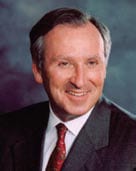 John O. “Dubby” Wynne | Retired President and CEO, Landmark Communications, Inc.
John O. “Dubby” Wynne | Retired President and CEO, Landmark Communications, Inc.
At Landmark, you played a key role in building Weather Channel. What do you think the channel’s role should be in today’s digital age?
We sold the Weather Channel eight years ago so it would be presumptuous to be precise, but what we saw in our time is even more true today. Weather in depth, updated constantly, on any place, even multiple locations, on demand and tailored to your interests. Streaming video, enhanced graphics, and other features are increasingly available, and more value added, and it will only get better.
In Frank Batten’s book, he describes some of the behind-the-scenes craziness of Weather Channel’s launch at the NCTA convention in 1982. What do you remember most from the day?
Crisis management. Our satellite link wasn’t working. We had problems inserting local data through the Weather Stars, and just before our launch, a reporter kicked off our power supply. Thanks to the great folks at TeleCable, our sister cable operating company, and at KLAS, our CBS affiliate in Las Vegas, it worked, but just barely.
You’ve spent much of your retirement time focusing on ideas to help Virginia and the Hampton Roads region. Why has this been such a passion?
I’m a Virginian and was lucky enough to have some success which placed me in positions of leadership to help others. In Landmark, we believed if we succeeded, we had an obligation to help others have a better life. When great change initiatives become doable, passion helps create excitement and shows commitment.
What’s the best piece of business advice you ever received?
Don’t spend so much time personally getting things done, spend most of your time identifying and developing people, and building a culture that understands and embraces change.
What does it mean to be inducted into the Cable Hall of Fame?
I am thrilled, but mostly because of the recognition it gives to The Weather Channel and the wonderful people who worked so hard to make it a success. And it recognizes my mentor, Frank Batten, Chairman of Landmark, who backed The Weather Channel through thick and thin.
Amos Hostetter Receives Bresnan Ethics in Business Award
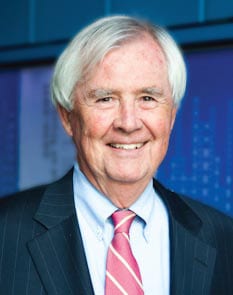
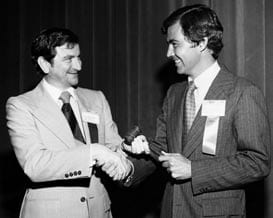 In addition to the Hall of Fame induction, The Cable Center bestows its William J. Bresnan Ethics in Business Award upon an executive in the industry who best exemplifies the standards upheld
In addition to the Hall of Fame induction, The Cable Center bestows its William J. Bresnan Ethics in Business Award upon an executive in the industry who best exemplifies the standards upheld
by the late Bill Bresnan. This year’s award, which is made possible through a gift from Bill’s family and Bresnan Communications, goes to Continental Cablevision co-founder and former CEO Amos Hostetter. Today, Hostetter is chairman of Pilot House.
“He has consistently provided strong leadership and guidance throughout his years in the cable industry, and his dedication in philanthropy and ethics in business is truly admirable,” Cable Center pres/CEO Jana Henthorn said.
In 2015, Pilot House published the book, “The Continental Cablevision Story,” which tells the story of the company and thus of Hostetter. These excerpts helps describe why he is this year’s Ethics honoree:
Above all, Continental Cablevision is remembered in the industry for the quality and integrity of its leadership, from its first days as a company to its last, and continuing into the future as its legacy lives on. Decker Anstrom, former president and CEO of the NCTA, recalled how Hostetter stood apart from his peers in the industry as cable faced increased regulation in the late 1980s. “Always very thoughtful, very studied in his approach, and took a very broad industry view about the mid- to long-term health,” Anstrom said. “He was in it for the long term, not the short term. And he along with a handful of others, I think, tried to provide the leadership to say, ‘Look, we may have unrestrained ability to raise prices, but we should be smart in terms of gauging what the market will bear.” (p.238)
Continental’s impact extended to the communities in which it operated. “We contributed back to the community, which was something Amos was particularly forceful on in terms of, over the years, developing C-SPAN and the children’s programing, and so on,” [longtime board member Vin] Ryan said. “He realized the fact that you had basically a monopoly, and that you had moral and ethical obligation to contribute to the community, which has never changed.” (p.240).
Download the entire book for free at ContinentalStory.com
CABLE TV PIONEERS
Celebrating 50 Years of Pioneers
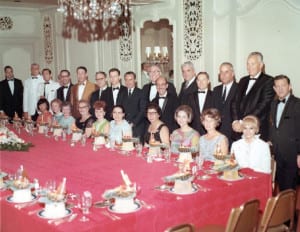
This photo captures the very first
Cable TV Pioneers banquet.
This year’s Cable TV Pioneers banquet has just a little bit more sparkle. After all, it’s the organization’s Golden Anniversary, with the first Cable Pioneers class created during the 1966 NCTA convention in Miami Beach, FL. You can read more about the group’s history on the next page, with Cablefax founder Paul Maxwell offering up his own 50th anniversary toast. At the newly expanded website CableTVPioneers.com, you can read and even watch video about the 21 people who founded the Cable TV Pioneers. It also features class photos of Pioneers from 1966 to present day.
Today, there are nearly 700 Cable Pioneers, a group that is responsible for establishing and funding the Cable Center. Its contributions are focused on the history component of the Center, including the oral histories. “The Pioneers have really transformed as the industry has transformed,” said Susan Bitter Smith, chmn of the group and exec dir of the Southwest Cable Communications Assn. “We have our very important core mission which is to honor and recognize individuals who are pioneers and entrepreneurs and key players in the industry. That’s a key function that we do at the dinner every year. But we’re also making sure that we continue to have that history and great background available for others to look at and use. We work with the Cable Center in that effort.”
With the industry changing at such a rapid pace, does it change the “Cable” Pioneers (witness NCTA’s decision to rebrand The Cable Show as INTX: The Internet & Television Expo)? Bitter Smith doesn’t think so. “The membership of the inductees is diverse as the membership of the industry is diverse,” she said. “Our inductees reflect that broader base of what the industry is and will continue to do that. I don’t know that our name changes because there is a relationship to the cable industry.” This year’s Cable Pioneers banquet is slated for Sunday, May 15 at the Fairmont Copley Plaza. It will honor the Class of 2016. It’s already almost at the sell-out point, according to Bitter Smith. “We’re filling the hall and overflow because 50 years is pretty significant,” she said.
“We do have some special treats—there will be a history component. We believe we’ll have some of our very early founders there. And we’ll have some special treats for attendees as well as Pioneers who come.”
The 2016 Cable TV Pioneers Class
- Jeff Bewkes, Time Warner
- David Cerullo, INSP
- Glenn Duval, Challenger Cable Sales
- Leslie Ellis, EllisEdits
- Marwan Fawaz, Sarepta Partners
- John Gibbs, Comcast Corp.
- Steve Goldmintz, Marcum Search
- John Heslip, Comcast Cable
- Yvette Kanouff, Cisco Systems
- Peter Kiley, C-SPAN Networks
- Mark Lieberman, Viamedia
- Mike Mason, Comcast Cable
- John Arthur Ogren, SpeedConnect
- Brian Roberts, Comcast Corp.
The Cable TV Pioneers: An Appreciation
Editor’s Note: We asked Cablefax Daily’s founder and Cable Pioneer Paul Maxwell for his reflections on the organization as it celebrates its 50th anniversary.
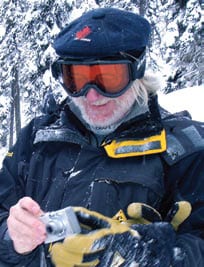 By Paul S. Maxwell
By Paul S. Maxwell
Back in late 1969, I wandered into the cable television industry. It was a bit smaller then. I started out helping write and edit Communications Magazine and CATV Newsweekly working for, among others, Communications Publishing Corporation’s principal: Stanley Searle.
Not long before I’d joined, one of cable’s unsung pioneers, the hard-working, hard-partying peripatetic executive named Samuel Street had talked Stan into founding an organization to celebrate the pioneers who had, in just the past 20+ years actually created the transmitting of broadcast signals beyond their natural reach using, at first—believe it or not—an antenna and open paired
wires like the ones that long ago connected an inside antenna to a TV.
That coaxial cable broadened the reach of broadcasters… a boon for both in the ’60s and ’70s, a source of great consternation today.
The first class was inducted in 1966… with Same-Same (Sam’s nickname) smiling. Same-Same became a longtime friend and tennis buddy for years. Sam became a Pioneer in 1980. He retired to Sheridan, Wyoming, as an art dealer and died not long before this 50th anniversary of the group. There’s a long list of current and late, but not forgotten, Pioneers at CableTVPioneers.com.
The first class of 21 included a long list of names that built the foundations of the business. It included: the guy who created the first great tech company, Milton Jerrold Shapp, who later became a Pennsylvania governor. The guy who took cable from its small town beginnings into today’s major conglomerates, Bill Daniels. For details on the 21, visit the Pioneers website.
Since many of the original, small cable systems were founded in Pennsylvania, as well as industry leader Jerrold and soon-to-be-challenger C-Cor, the nascent organization cut a deal with Penn State to house early collections of technical and marketing papers there. They’re all in Denver at The Cable Center today.
Twenty years after I wandered into the industry—bigger than ever—I joined Same-Same and others as a Cable TV Pioneer. And I haven’t missed a single one of the annual dinners at the NCTA—now INTX—show.
The thing about the cable industry that outshines all others is the unique, simple, but very real and meaningful camaraderie within the folks in the business. Partners and enemies; operators and programmers; technicians and lawyers (no kidding). Even journalists. Even during the franchise wars of the ’70s and ’80. Even now as the business and the world keeps changing… now faster
than ever.
See you in Boston at the Fairmont Copley Plaza!
THINGS TO DO IN BOSTON
While in Beantown, INTX goers may want to take a break from cable and do as the Bostonians do. From Red Sox games to attractions and dining options near the Boston Convention Center, we have you covered.

Boston’s Fenway Park is the oldest MLB ballpark currently in use.
Fenway Park
Those arriving over the weekend can catch a Red Sox vs Houston Astros home game at Fenway Park (15-minute cab ride from the Boston Convention Center) on Saturday, May 14. If you attend another game on Sunday, you can celebrate the birthday for Wally the Green Monster, the official mascot for the Sox. Attendees will receive a Wally Gnome with the purchase of tickets through two special packages. If you aren’t in the mood for a game and just want to tour the ballpark, daily, year-round tours are available. During the one-hour walking tour, guests get to see the locker room, Sox Legend Ted Williams’ seat, Trophy Room, visit Pesky’s Pole and sit atop the Green Monster that stands 37 feet 2 inches high overlooking leftfield.
Samuel Adams Brewery, 30 Germania St
While this place isn’t exactly close to the Boston Convention Center (30-minute cab ride), a trip to Boston wouldn’t be complete without visiting the Samuel Adams Brewery. The best part of the tour (other than the tasting part)? It’s free, though donations, which will benefit local organizations, are expected. During the tour, visitors learn about the history of the brand, experience the entire craft brewing process, taste the malts and smell the Hallertau hops used to brew Samuel Adams. And, of course, they can sample a few of the award winning beers. After the tour, if you eat there and order their beer, you can get the Sam Adams beer glasses as souvenirs.
Boston Tea Party Ships and Museum, 306 Congress St
If you have an hour or two to spare for a quick dose of New England history and culture, within walking distance from the Convention Center is the Boston Tea Party Ships and Museum. It’s a multi-sensory kind of experience as costumed characters walk you through a fun hour of humor and actions. After the tour, stop at Abigail’s Team Room & Terrace right at the museum for a relaxing break. Enjoy a cup of tea and tasty treats like assorted cakes, scones, muffins and pies, all with a history twist.
Row 34, 383 Congress St
In a region known for fresh seafood, where do you go for lobster rolls, oysters and famous New England clam chowder? Within walking distance from the Convention center is Row 34. Its vast raw-bar menu includes a variety of oysters on the half shell, house-smoked fish and fresh lobster. And oyster is definitely the star of the restaurant, which bills itself as “the working man’s oyster bar.”
New England Aquarium, 1 Central Wharf
If you have half a day to spare before or after the show, check out this giant ocean tank with more than 2000 sea animals at the waterfront. You will enjoy it even more if you like penguins (who doesn’t?). In fact, you walk in and are immediately welcomed by… yep, penguins! It’s a short 10-min cab ride from the Convention Center.